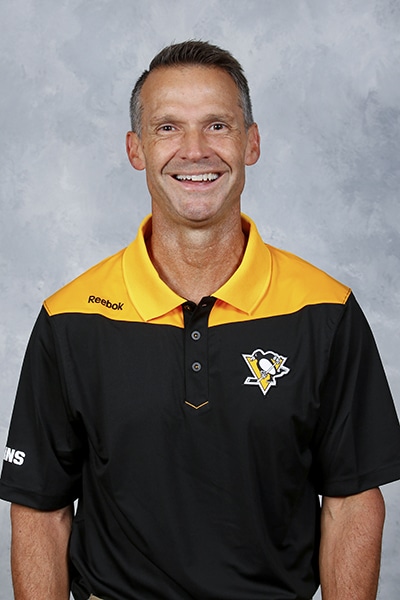|
Getting your Trinity Audio player ready... |
When Curtis Bell was a second grader living in Los Angeles, his teachers let him and his classmates play on the blacktop for recess. Excited to be outside playing football—and also by the fact that he was, indeed, an invincible second grader—Bell ran full-speed ahead to catch a pass and, much to his chagrin, also ran headfirst into a metal tetherball pole.
“I remember being completely knocked out,” Bell says, laughing at the incident. Despite the accident, Bell’s lifelong love for sports later informed the rest of his career—heavily outweighing the electrical work he did during his time in the Navy. Little did he know, this concussion—in addition to a few other concussions acquired over the years—would also resurface in his adulthood in unexpected ways.
“As an adult, I was dealing with some gastrointestinal and permeability issues and when I went back to school to get my master’s in applied clinical nutrition, I discovered that there is some relationship between these functional issues and with head trauma,” Bell explains. “These real-life experiences made me want to keep studying functional medicine to learn more about how power systems are intuitively interacting with each other on a daily basis. Now I question how we can affect those systems to create better outcomes and perform better on the sports medicine side of things.”
When Bell registered for the Functional Diagnostic Nutrition certification course, which teaches trainers how to use lab work for peak performance, founder Reed Davis knew right away that Bell was no ordinary muscle head. “Curtis asked more questions than the rest of the class put together,” says Davis. “It’s no surprise he has reached the pinnacle of his profession and is being recognized for it. He takes everything he does to a whole new level—his knowledge and understanding of physical fitness is only surpassed by his intellectual curiosity and academic prowess.”
Since 1997, Bell has used the knowledge gained from his personal background, as well as through his studies in functional medicine and passion for holistic wellness, to work with several professional hockey teams, developing neuromuscular therapies and nutrition plans to help the athletes perform at their greatest capability. After working as head athletic trainer with the Tampa Bay Lightning, the New Jersey Devils, and the Florida Panthers, he now serves as director of sports performance for the Pittsburgh Penguins.
Throughout his years in the industry, Bell has come to understand the unique nuances of hockey with regard to movement, informing his performance-building techniques with each member of the team.
“Hockey is completely different from any other sport,” Bell says. “It’s not on grass or turf—the players are in skates, on ice, so they’re moving in a completely different way compared to land-based sports, and the skating stride is a completely different biomechanical model. That’s what intrigued me about the whole sport—it’s hard to be good at playing hockey, so knowing how difficult it is to play challenges me to create performance models that make the athletes even better.”
Bell explains that while there has been substantial research centered on optimizing movement efficiency in sprinting and running, for instance, skating has not had the same attention, meaning that professionals in Bell’s position are still seeking and experimenting to find the perfect methods of enhancing or perfecting processes with limited resources available.

As such, Bell and his team develop approaches and philosophies based on practices that work for the entire team, then adjust them to fit the needs of each player.
“There are so many factors that make a difference in how we individualize our idea of biomechanical optimization,” Bell explains. “We try to generalize it to a degree and have some sort of foundational system that focuses on strengthening everybody, but then it becomes an individualized program for guys that have different strengths, weaknesses, or flexibility levels. In essence, there is no exact science.”
Bell’s team further develops its performance techniques by analyzing different trends in injuries or successes that each player has had to determine if or how processes should be tweaked.
“If we notice several different abductor-related soft tissue injuries that we haven’t had before,” Bell exemplifies, “then we try to uncover what we have done differently or what we could do differently in our strength training and exercises to change that.”
Bell and his team of soft tissue specialists, strength and conditioning coaches, and medical trainers start a typical day by discussing each player’s physical status, rehab methods, and “red flags,” or injuries. Once the game plan for the day is sorted, team members go to work in their respective fields.
Of course, game days break the normal routine and include morning workouts, midday downtime, activation drills, flexibility training, and a pre-game meal.
While Bell’s job focuses largely on how players are performing, he recognizes that perfection doesn’t come strictly from exercise. His own experiences taught him just how important an appropriate diet is to enhance a person’s well-being or capability. Luckily, the Penguins’ personal chef is a master at dishing out grass-fed, wild-caught, organic, anti-inflammatory meals to keep the players feeling good and playing better.
“We try to focus on what we felt were the most important aspects of optimizing performance based on nutrition,” Bell says. “We felt that eliminating as many inflammatory aspects of our food as we could was the best way to go. So, everything we feed the players is gluten free, dairy free, and soy free.”
No matter what city the Penguins play in each week, Bell’s team has scouted the perfect restaurants across the country to cater meals that can maintain the standard of this healthy diet. Indeed, even the meals provided on planes follow anti-inflammatory, high-quality guidelines. Though it may seem difficult, Bell says the advantages of keeping a modified diet from a performance perspective outweigh any craving.
“It gives them peace of mind knowing that we’re not concerned about wins or losses. It’s really more about the individual and what that person is dealing with.”
“These guys are adults,” Bell says with a laugh. “If they want to have a beer, or glass of wine, or a couple cookies, we also provide those options for them.”
While the players stick to their diet 99 percent of the time, Bell says he does allow them to pick a “cheat meal” once a month. “We’ll have certain foods from a particular city that players really like,” he explains. “So, in Philadelphia maybe we’ll have cheese steak sandwiches, or in Boston we’ll have lobster rolls. We didn’t want to eliminate everything—we just wanted to make their choices better.”
The key to keeping a tight but optimally performing ship, Bell says, is to educate the team every step of the way. “It’s a very interactive role—we try to explain to them what we’re doing and why we’re doing it and why we feel it’s important for them,” he says. “We want to know how they feel or what they’ve noticed day-by-day with regard to their health. It gives them peace of mind knowing that we’re not concerned about wins or losses. It’s really more about the individual and what that person is dealing with.”
Whether Bell is helping players eat well, move optimally, or focus mentally, he emphasizes the importance of allowing the players autonomy with their choices while providing them the resources they need to make informed decisions. Naturally, the more the players are willing to learn, the more Bell and his team learn about the players.
“It’s really important to keep discovering and keep trying to be that innovator,” Bell notes. “Every day is a different journey that leads to a new discovery—and if you miss out on doing that, you miss out on a lot of what could help enhance your sport. Always be on the edge of wanting to know more.”
New York Chiropractic College offers an education like no other to create professionals who have no equal. Every day our outstanding alumni use their evidence-informed, patient-centered training in fields such as Chiropractic, Nutrition, and Human Anatomy & Physiology Instruction to positively impact health, wellness, and lives.

